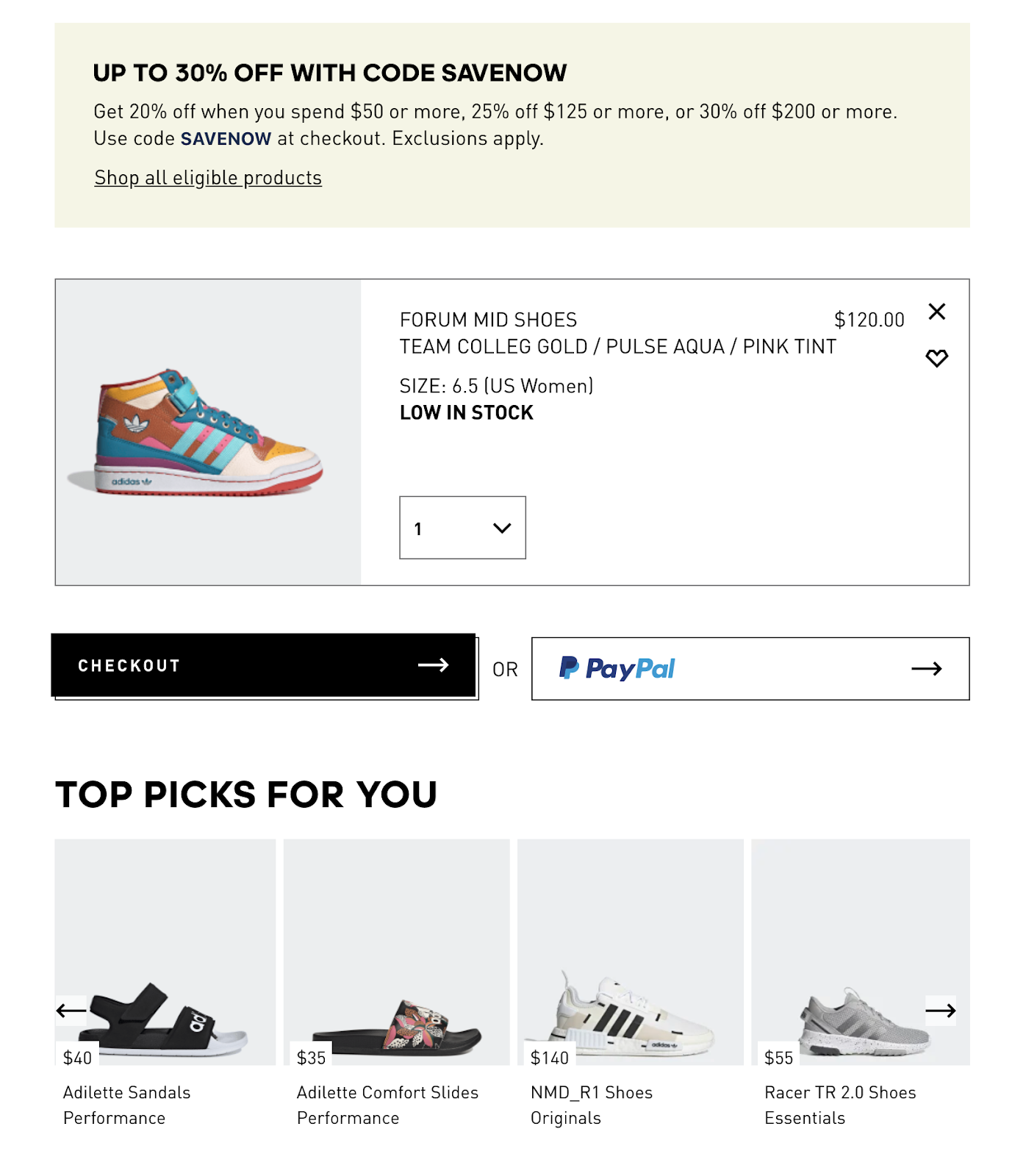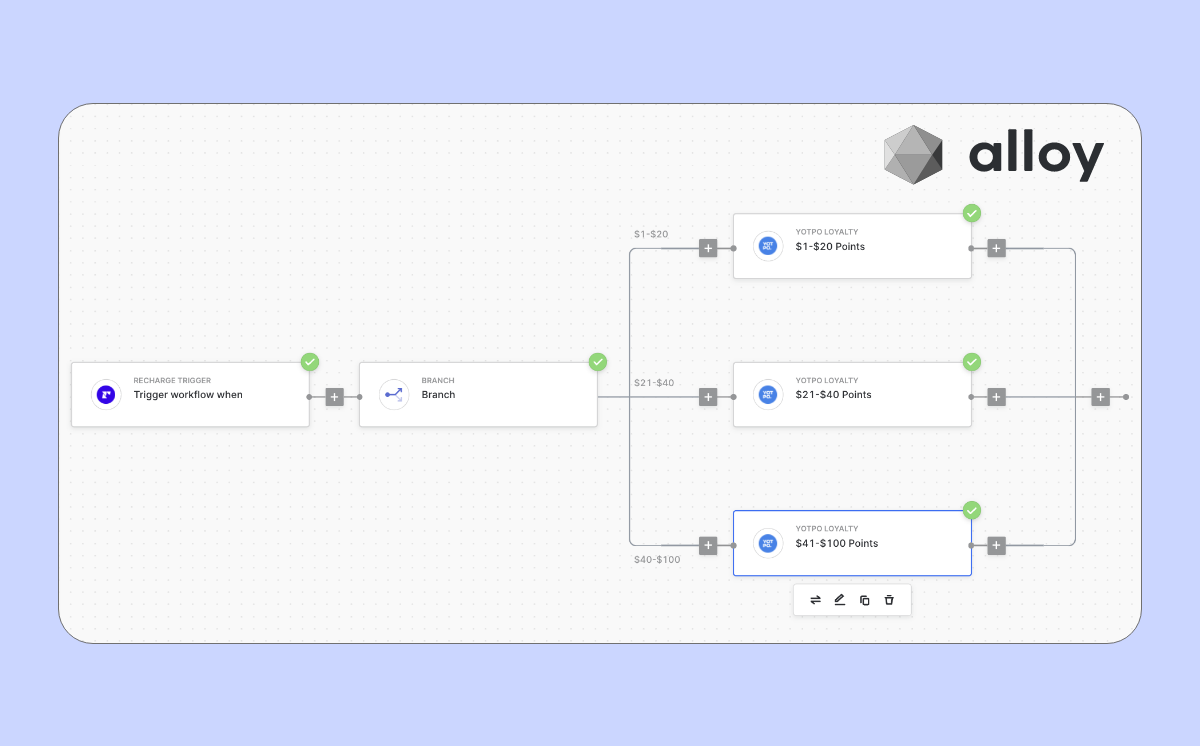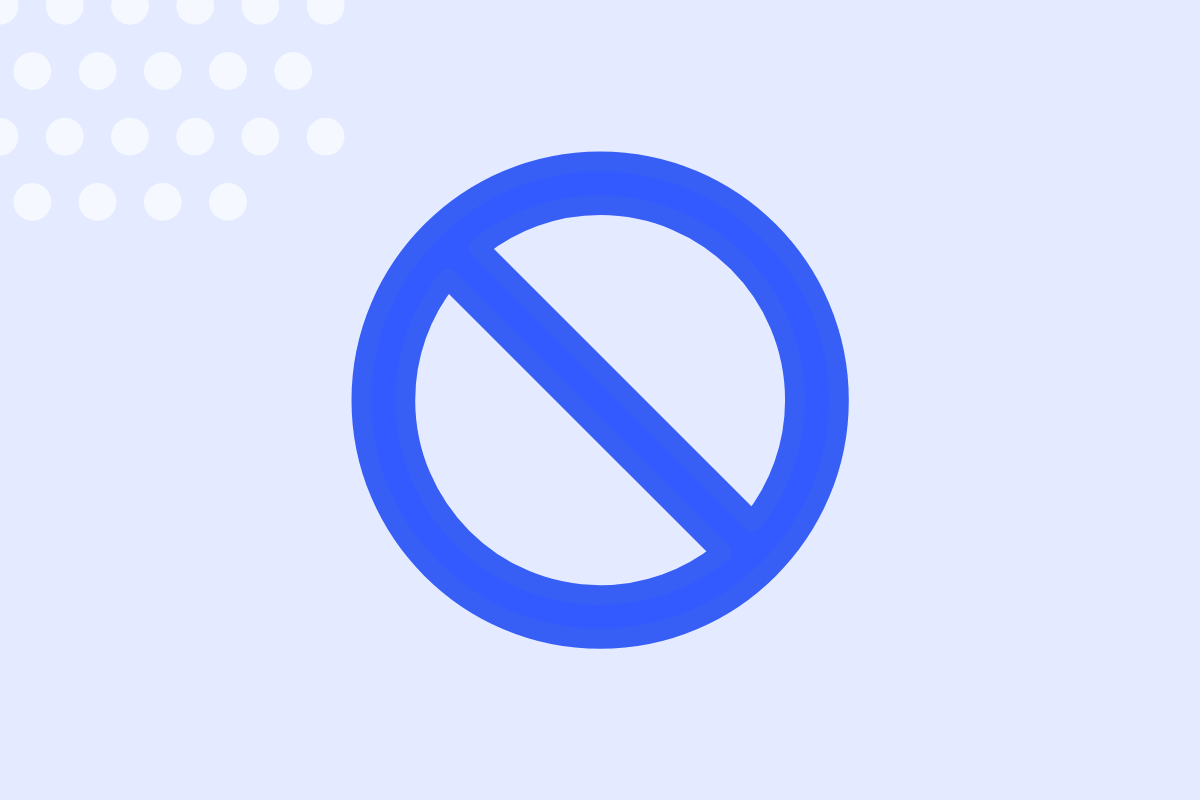It can get tricky figuring out how (and when) to upsell or cross-sell to your customers.
Trust us; we get it!
Your goal is to maximize the profit you make on each sale, right? And you already know that selling to existing customers is much easier than acquiring new customers.
So, you need a way to encourage customers to spend more every time they make a purchase.
The way we see it, you could either encourage them to purchase a more premium product (upselling) or purchase related products that would add value to their order (cross-selling).
Simple, right?
Here, we’ll dig deeper into how you can send better upsell and cross-sell emails that bring in more sales, help you maximize profits, and encourage customers to spend more than they planned!
Ambitious? Yes.
Difficult? Not at all!
Here's what we'll be covering in the article:
- The definitions of upselling and cross-selling
- How to do these correctly for new and existing customers
- Four email marketing tactics you can use for your eCommerce store
The eCommerce upsell and cross-sell: What's the difference?
Cross-selling and upselling have clear benefits for companies – regardless of their industry, business model, or target audience.
Specifically, they allow businesses to generate more revenue on each sale while doing wonders for customer retention.
So, before we get into how this all fits into your email marketing strategy, let’s take a step back and understand what upselling and cross-selling are and how they’re different from one another.
What is upselling?
Upselling is a marketing and sales tactic businesses use to persuade customers who bought a product to upgrade to a better version of the product they just purchased.
Let’s say a prospective customer visits your online shoe store looking for a great pair of sneakers. You’d want them to buy the most expensive sneakers from you... for obvious reasons! (Can I get a cha-ching?!)

By maximizing the money you make on each sale, you’ll be able to generate more revenue without doing any extra work. It makes sense, right?
That is how upselling works.
In other words, you persuade existing customers to buy a more expensive product or service so that you’re able to generate more revenue from the sale.
More money per sale, that’s the goal!
If you want a common life experience you can relate to, think about the last time you ordered a burger and fries at a fast-food joint, and the guy behind the counter asked you if you wanted it super-sized. That’s another slick real-world example of upselling!
The best thing about this sales technique? It’s as simple as it sounds!
Businesses offer upsells all the time to bump up their bottom line, and you can do the same by implementing the same techniques in your email marketing strategy – more on this later!
What is cross-selling?
Cross-selling is a marketing and sales tactic businesses use to persuade customers to purchase additional products or services that complement the item they bought or are about to buy.
Cross-selling and upselling do sound similar.
The only real difference is that, with cross-selling, you offer additional products that would add value to the primary product the customer intends to purchase rather than upgrading to a premium product.


Let’s say a prospective customer navigates to your online shoe store and adds a nice pair of red sneakers to their cart.
Your website suggests that they should also buy socks to go with the shoes on the checkout page. The customer thinks that’s a great idea and immediately adds the pair of socks to their shopping cart.
They’re thrilled to have a new pair of socks to go with their new sneakers, and you just made more money on a sale. It’s a double win!
The key to good cross-selling is to offer more value to your customers and help them understand how they can benefit from it. Online businesses – especially eCommerce stores – do this all the time to maximize the profits they generate from each sale.
Going back to our fast-food illustration, if the counter attendant had instead asked you if you wanted a drink with your burger and fries, they’d be cross-selling!
Upselling vs. cross-selling
Upselling is all about getting customers to buy a premium, upgraded, or expensive version of the same product or service. This is why when a customer buys the premium pair of sneakers from your online store (i.e., a more expensive product), you’re upselling.
Cross-selling is about offering an additional product or service that complements the purchased item. So, when you suggest that they buy matching socks with their red sneakers, you’re cross-selling.
Either way, you’re able to increase the size of each transaction while delivering more value to your customers while giving your average order value a nice bump.
It's a solid business strategy that's been around for ages, but here's why you should use it.
So, why should you use upselling and cross-selling strategies to maximize your revenue?
For starters, you don’t have to find new customers to sell your stuff to.
And we all know that it’s a lot easier to sell to an existing customer than someone new. According to Harvard Business Review, acquiring a new customer is 5 to 25 times more expensive than retaining an existing one.
Yikes!
Plus, once you make a sale, you can use their contact information (like their email address) to stay in touch. As a savvy digital marketer, you should already have an email list of your customers that you can reach out to.
Sending out cross-selling and upselling emails to customers is a great way to boost sales without harming customers’ experience.
So, let’s go through some of the ways you can improve your upsell and cross-sell emails.
//[inject:ad-multi-automations]
How to upsell and cross-sell correctly (And, yes, you can do it wrong)
Now that we know the difference between these two selling strategies, it's vital to execute them.
However, you don't want just to start going at this all willy nilly without a bit of guidance. If you're not careful, you could be putting all your eggs in the wrong basket when promoting other products for people to purchase.
So...
Here's some advice for making the most of things and getting started on the right foot.
Determine which products get the best results
When it comes to cross-selling, not every product you have will complement another product someone purchased or is considering purchasing.
And even if you think that it goes well with a particular product, your customers may be sending you different signals.
That's why it's always good to look at your data.

To do that, you’ll need to do a bit of manual digging to figure out:
- Best selling products (See how Everlane puts this together in the image above)
- Which products customers usually purchase together
If you run multiple stores, you may want to cross-sell one store's products to another. But digging into the data in different stores can be a bit tricky.
However, if you use Sendlane, you can connect multiple stores under one account, and your dashboard will display your top-selling products. Plus, this makes it even easier to cross-promote things to your different audiences.
It’s a win-win-win.
Offer upsells and cross-sells that make sense
Once you peer over the data, you’ll have a better idea of the correct type of offers you can make.
For upsells, make sure what you plan to offer will be perceived as an upgrade from the current product, as BarkBox does here.

Generally, this is much easier to put together than cross-selling offers because the line to upgrading is just a select few options.
Cross-selling is where it can get a bit sticky.
So here are a few tips to help you make sure that what you’re offering isn’t overwhelming for customers:
- Use terms like “Often Bought Together” when showing multiple products to add
- Try not to offer more than four complementary products to limit choice fatigue
- Include reviews in your emails about the products you’re cross-selling
- Consider offering one product as its own post-purchase email
These are just a few ideas to make sure the strategies you put together work to gain more sales.
But that’s just high-level stuff.
There are more tactical things to consider as well.
Four tips for better automated upsell and cross-sell promotions
1. Segment your email list
While segmenting your email list based on their preferences might seem complicated, you should know it’s pretty easy.
On our platform, we've made it as easy as can be:

- Log in to your account.
- In the left sidebar, hover over Audiences, then click on Segments.
- In the right corner near the search bar, click on New Segment and dial in your choices from there.
You can follow this walkthrough for more detail on how to get it done.
Segmentation is one the easiest ways to personalize content while also increasing revenue.
You can then use this information to create tailored email messages and upsell or cross-sell offers explicitly targeted towards your prospective customer.
It encourages existing customers (likely those who’ve bought their mattresses) to go for an additional purchase and try out the pillow that complements their sleep.
To help get you started, here are a few ideas for some segments you could create:
- Segment by interest. If someone purchases cleats, a soccer ball, and shin guards, they will likely be interested in Soccer and/or sports. Creating a segment where you can bracket off interests and preferences is a good jumping-off point. From there, you can cross-sell soccer-related items or upsell a premium product.

- Segment by the number of orders. Generally, the more often someone purchases from you, the better of a customer they are. You can create a few segments based on the number of orders: under X, between X and X, and above X amount of orders. Doing that helps you track purchasing patterns and gives you a good idea of where people stand and how to move them to the next bracket. You can cross-sell personalized product recommendations based on previous purchases to up the number of orders placed and give your bottom line a nice boost while you’re at it.

For a deeper look into what eCommerce email segments to set up and how to do that, be sure to check out our eBook all about segmentation!
//[inject:ad-ebook-segmentation]
2. Determine the right time to send upsell and cross-sell emails
Here’s the deal: your email message is important, but so is timing.
Upselling or cross-selling through email marketing usually means you’ll have to get a little creative. You can’t just send out mass upsell emails and hope that recipients will be in the mindset to buy from you.
Here are a couple of actionable tips to get you started with a step in the right direction:
- Make sure your email content is relevant and aligns with your customers’ recent purchases. In other words, don’t cross-sell car tires with speed boat purchases.
- Be quick on the draw. If a customer purchases something, cross-sell them a relevant product after the purchase – not a few months later. You can make perfectly targeted product recommendations automatically with site tracking in just a few clicks!
- Keep your emails specific and tailored to your customers’ needs and interests. By factoring in past purchase history, you’ll be able to let customers know that you understand their needs better than anybody else. And you’ll be able to make relevant offers.
Not sure how to get started? Sendlane’s advanced multivariable segmentation feature allows you to segment your email list based on past purchases on autopilot!
Here’s how Dollar Shave Club does it:

Notice how this email is actually an order confirmation email? (We see what you’re doing over that DSC!)
This email makes for an excellent opportunity to cross-sell products that would add value to the primary order, and you can do something similar.
To take things a step further, check out Sendlane’s AI-based machine learning open predictability feature, which allows you to send out emails at best possible time.
3. Make a Compelling Offer
The key to writing good cross-selling and upselling emails is not to be too pushy or sale-sy with your offer.
Instead, take a more laid-back approach to convince recipients to act on your conversion goal.
Here are some quick tips for making enticing upsell offers:
- Educate customers about product features or advanced functionality available with the premium product.
- Explain how the premium version offers more value. For example: Is it more cost-effective in the long run? Does it come with additional resources the customer would be interested in?
- Focus on communicating the benefits of opting for the premium offering.
And if you’re cross-selling, use these tips to get started:
- Share reviews and testimonials from other customers or clients. Communicate the benefits of your product through the words of others. (On a side note, if that’s not persuasive enough, then I don’t know what is!)
- Use wording that incites emotion and motivates customers to take action.
- Identify their pain points and show them how the additional products add value to the primary product. For example, if you offer online courses and cross-sell one-on-one coaching sessions, explain why they should opt for the coaching sessions.
In other words, instead of singing a breathless paean about your products’ many features, craft a compelling email message that explains how customers can benefit from upgrading to the more premium offering or purchasing a related product.
Of course, you also want to pay attention to your email’s layout.
Remember to add life to your emails by using visual elements like images, photos, illustrations, GIFs, and infographics.
Here’s an example from Harry's that ticks all the boxes:

See how they’ve included a photo, the benefits of the products, and why you should buy them together.
If you’re making upsell or cross-sell offers, place the offer towards the end of your email message as a final opportunity to nudge the recipient towards your goal. So, by the time they get to the offer, they’ll be in a better position to make an informed buying decision.
4. Automate Retargeting Ads
Email is awesome. We love it.
It's pretty much our bread and butter here at Sendlane. But it's not the only way to utilize cross-selling and upselling.
Another smart tactic to make the most of retargeting ads.
Let's face it.
We're forgetful and easily distracted.
We can be browsing a site on our phone, get distracted when we're breaking up the millionth fight between our kids, and then totally forget to go back to what we were doing before that.
If you want to counteract this natural flow to life, then retargeting ads are your new BFF.
You likely see these pop up on your social feeds all the time. Like this one from Pura Vida:

The image above is a prime but straightforward example of retargeting a potential buyer with an ad after viewing and then leaving your website. But you can use these ads to both upsell and cross-sell products.
It's like that little tap on the shoulder reminding them to come back and make that purchase.
Here are some ways your can start using retargeting ads as part of your sales strategy:
- Set up cross-sell or upsell ads with Facebook. We could get into the nitty-gritty with ads, but there's no need to overwhelm you here. You can follow Facebook’s guide to set up cross-sell ads and upsell ads with the Facebook ad manager.
- Integrate your marketing automation software with Facebook. Nearly all Facebook retargeting ads are automated, but if you can integrate that platform with your marketing automation software, that's even better! In our platform, we seamlessly integrate with Facebook to make it easy to start automating ads as well as building retargeting ads into your marketing funnels. You can learn more about that here.
The same rules for email apply to ads here:
You should recommend products and use CTAs that bring people back to your site and hopefully purchase from you.
Now it’s time to get to work
The great thing about upselling and cross-selling is that all sorts of businesses can benefit from them.
Whether you own an online music store, run an event management business, or sell software subscriptions, you can use upselling and cross-selling in your email marketing strategy to increase order sizes and generate more revenue.
Let’s quickly recap the key tips you need to follow to upsell and cross-sell to your customers:
- Segment your email list to make sure you’re making relevant offers.
- Determine the best time to send upsell and cross-sell emails. For example, as part of the order confirmation email, after a milestone, or after checkout.
- Follow best practices and add visuals to make your upsell and cross-sell offers more compelling.
- Use retargeting ads and have them run automatically.
Since we’ve captured your attention all that way to the very end, why not give Sendlane’s marketing and email software a try? We make it possible to do everything that we’ve covered and more.
Interested in learning some powerful pitch styles? Dive into this article!





%20(1).png)
%20(1).png)
.jpg)


.jpg)
.jpg)


.jpg)




.png)



.png)





.png)


.png)

.png)
.png)

.png)
.png)

.png)

.png)


.png)
.png)
%20(1).png)
.png)









.png)











.png)
.png)

%20(1).png)

%20(1).png)



.png)


























.png)











































.jpeg)



.png)



























.png)



.png)

.png)

.png)
.jpeg)


.png)













.png)

.png)










.png)












.png)






































.png)



.png)

.png)

.png)
.png)

.png)
.png)

.png)

.png)

.png)




.png)
.png)




















